Introduction
Front
{{section_header}}{{section.name}}{{/section_header}}
Panasonic has gone a good job since last year realizing that people expect TVs to be both functional and attractive. Now in 2012, they've had a whole year to finesse the design. Overall, we like what we see. They've managed to reduce the bezel considerably, so it's even thinner than LCD TVs of just a few years ago.
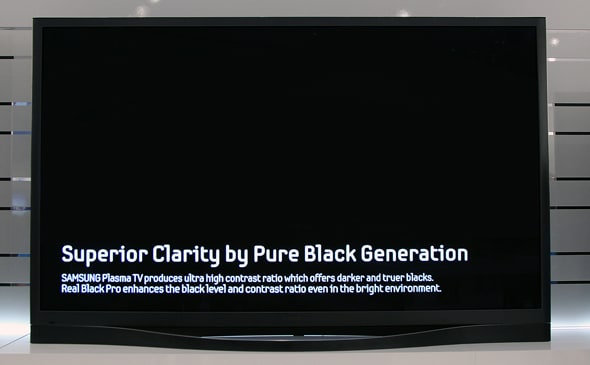
Back
{{section_header}}{{section.name}}{{/section_header}}
Not much to see back here. In fact, we can't verify that this will be the final design. Typically, manufacturers just mock up their best approximations for the CES show floor.
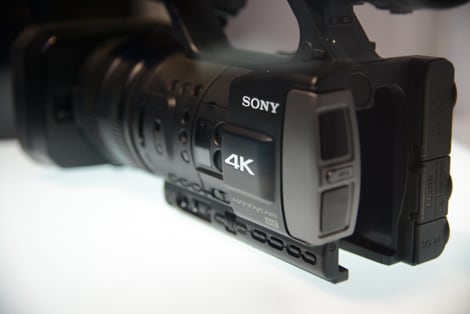
Sides
{{section_header}}{{section.name}}{{/section_header}}
The {{product.name}} will be quite thin, as you can see. That's impressive. Just a few years ago they probably would have said that making a plasma this thin would be inconceivable (or perhaps simply unnecessary).
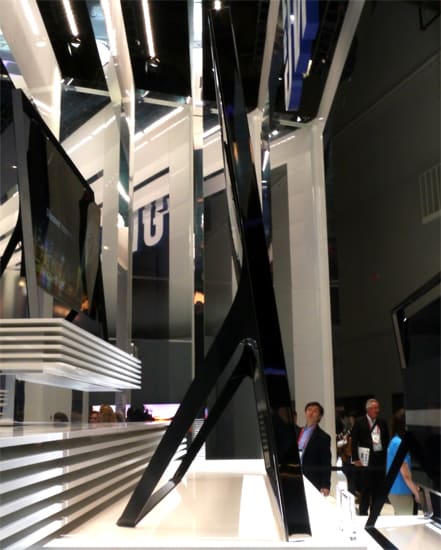
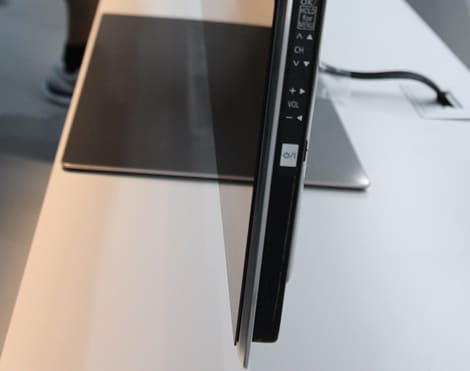
Stand/Mount
{{section_header}}{{section.name}}{{/section_header}}
The stand is a simple, unobtrusive piece of glossy plastic. It better be sturdy, though, because a 65-inch plasma TV is no joke. Those things are heavy, regardless of how thin they get.
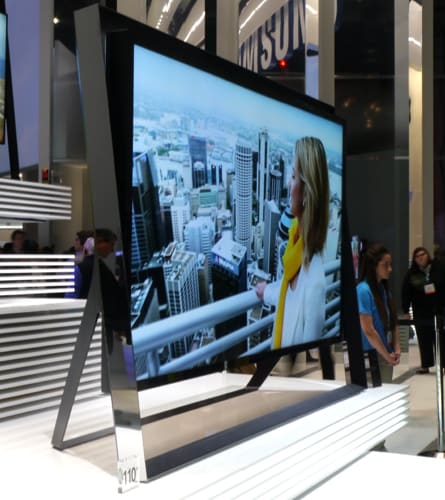
Display Size & Technology
{{section_header}}{{section.name}}{{/section_header}}
The {{product.name}}, along with all the new 2012 Panasonic plasmas, are showcasing some new technology. The plasma panels have been redesigned, including faster switching phosphor. They're touting that the new panels create brighter whites, deeper blacks, and smoother motion. We've covered this in more detail in our review of the VT50 series, the flagship of the 2012 Panasonic plasmas.
The new panels are also supposed to have reduced reflections from ambient light. This is typically a problem with plasma TVs because they have a glass facade, while LCD TVs have a less reflective, plastic screen.

Formats & Resolution
{{section_header}}{{section.name}}{{/section_header}}
The {{product.name}} has a native 1080p (1920 x 1080) resolution.
Brightness, Blacks and Contrast Ratio
{{section_header}}{{section.name}}{{/section_header}}
The {{product.name}}'s new plasma panel is purported to brighten the whites, something we hope is true. The previous generations of Panasonic plasmas we've reviewed tend to have rather dull whites. Panasonic is also touting deeper blacks, which is definitely not a problem. Again, we covered a lot of this in our review of the VT50.
Color
{{section_header}}{{section.name}}{{/section_header}}
Panasonic did not mention any specific improvements to color in the new GT50s, except to say that the TV can display 24,576 steps of gradation. Of course, if you spend most of your time watching cable or satellite TV like everyone, the signal is already so compressed that you'll never see close to that many steps.
Motion & Refresh Rate
{{section_header}}{{section.name}}{{/section_header}}
The new, faster-switching phosphor in the 2012 plasmas should improve the speed at which a pixel to change from one color to another, which would improve the perceived motion performance.
Viewing Angle
{{section_header}}{{section.name}}{{/section_header}}
All plasmas have great viewing angles. We expect no problems with the {{product.name}}.
3D Glasses
{{section_header}}{{section.name}}{{/section_header}}
The {{product.name}}, like all Panasonic 3D TVs, uses active shutter glasses that work over Bluetooth. Yes, the active shutter glasses are the expensive ones, if that's what you thinking. The cheaper technology, passive 3D glasses, cost only a few bucks a pair. Active shutter glasses cost between $70-100 per pair. Panasonic has teamed up with Sony, Samsung, and another party to make a cross-compatible system of glasses, but that technology won't debut in this generation of TVs.
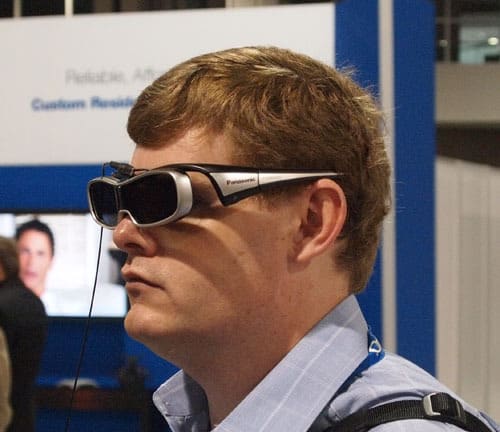
There's no getting around the fact that 3D glasses make you look ridiculous (and possibly feel ridiculous too).
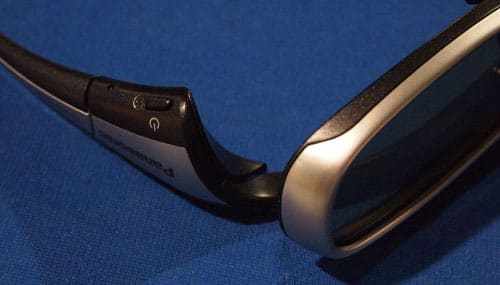
The power button makes the glasses usable for viewing 3D by turning on the active shutter feature.
3D Effect
{{section_header}}{{section.name}}{{/section_header}}
The {{product.name}} should be improved over last year, if Panasonic can make good on the promise of the faster switching phosphor. That should allow the pixels to change color faster, which would reduce crosstalk. Crosstalk, or information intended for one eye bleeding into the other, is one of the biggest problems plaguing 3D. Any improvements here would be welcome.
Audio & Video Ports
{{section_header}}{{section.name}}{{/section_header}}
The {{product.name}} seen in the photo below isn't necessarily showing the ports as they'll appear on the final product, but they'll probably we close. We could make out four HDMIs and three USBs. The TV will also have built-in WiFi.
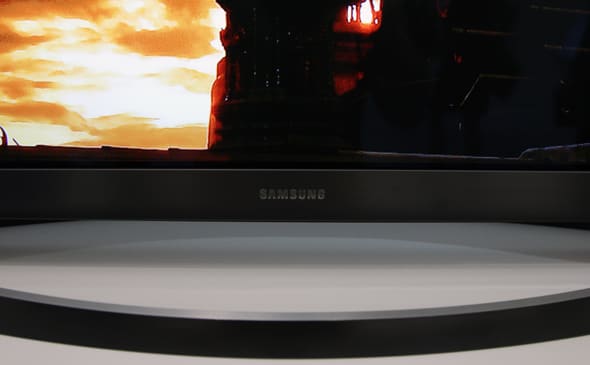
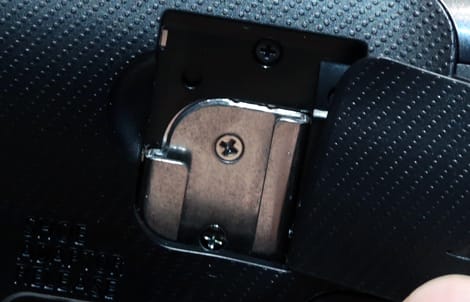
Internet & Other Media
{{section_header}}{{section.name}}{{/section_header}}
Panasonic appears to have very little to improve its smart TV platform for 2012. It looks the same, with a few minor upgrades to content and navigation.The competition, mainly Samsung and LG, have made huge leaps forward in the last two years, and this year they've installed much more powerful processors to help speed up their streaming content platforms. Conversely, Panasonic has switched to cloud-based processing. That could certainly help bring their unit costs down, but with this technology you're at the mercy of your internet bandwidth.

Remote
{{section_header}}{{section.name}}{{/section_header}}
The {{product.name}} ships with a standard remote, as well as the new Viera Touch Pad. It features a touch-sensitive area for moving a cursor around the screen (illogically shaped into a circle to control your rectangular TV screen). Our limited experience with it on the show floor was not promising. We had a hard time making fine adjustments.

The other remote is more traditional, and probably more intuitive.

Controls
{{section_header}}{{section.name}}{{/section_header}}
The {{product.name}}'s controls are located on the right side of the frame.
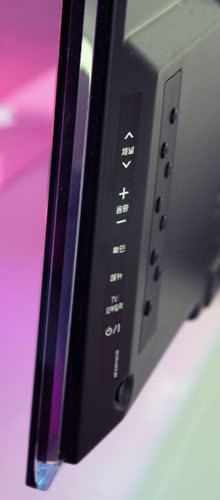
Menu
{{section_header}}{{section.name}}{{/section_header}}
The menus on the 2012 TVs looks very familiar if you've seen the 2011 TVs. In fact, we were hard-pressed to see more than very subtle differences. For basic TV operation, the menu is more than adequate. For the streaming content platform, however, the interface was sluggish and ineffective, in our previous evaluations.
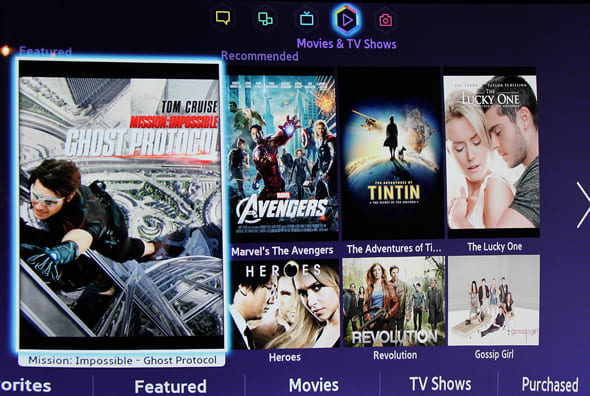
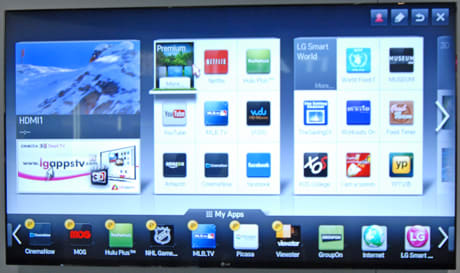
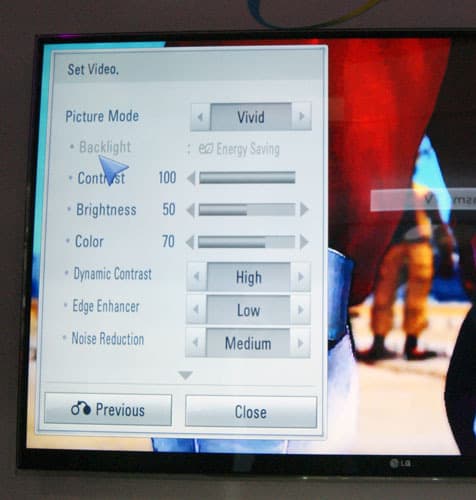
Conclusion
{{product.vanity}}
The Panasonic GT50 series continues a solid tradition of plasma TVs from the venerable manufacturer. We expect good, if not very good, picture quality. The baseline performance from the last two years of GT televisions has been strong, so any technological improvements can only help (that's assuming, of course, that they don't accidentally harm picture quality). The redesigned plasma panels, with their faster switching phosphor, should give it a boost in most areas.
While Panasonic has made forward strides in the exterior design, but the interface design seems sadly lacking. They've done little to improve their lackluster streaming content platform, Viera Cast, and the experimental Viera Touch remote control does not appear to live up to its potential. Overall, we're cautiously hopeful about getting a fully-working model of the {{product.name}} in our labs.
No pricing or ship dates have been announced for the {{product.name}} at this time.
Series Comparision
{{product.manufacturer_specs['Series Name']}} Series
The Panasonic GT50 series comes in four screen sizes: 50, 55, 60, and 65 inches. All have the same feature set, including 3D display, the Viera Cast smart TV platform, and a similar design.
Specs
{{manufacturer_specs_table}}
Meet the tester
Mark Brezinski works on the Home Team, reviewing refrigerators, minifridges, dishwashers, washing machines, dryers, air conditioners, air purifiers, and fans.
Checking our work.
Our team is here for one purpose: to help you buy the best stuff and love what you own. Our writers, editors, and lab technicians obsess over the products we cover to make sure you're confident and satisfied. Have a different opinion about something we recommend? Email us and we'll compare notes.
Shoot us an email
